What Is Contingent Workforce Management (CWM) Software?
- 5 Dec 2024
- 11 mins read
- Posted in
Content:
-
Essential Tools and Features of Contingent Workforce Management Software
-
Best Practices for Implementing Contingent Workforce Management Software
What Is Contingent Workforce Management Software?
Contingent workers have offered businesses a smart way to manage workforce needs since forever. Even today, there may be times when you need additional support that your permanent employees cannot provide.
Think – when a team member goes on a maternity break or a sabbatical and you engage someone with the same level of advanced skills, to fill in just for that duration. Or if you are updating your tech security system and need experts to get it up and running.
Today, it goes beyond just stopgap, one-off needs. You may also have recurring requirements that prompt you to engage non-permanent staff like freelancers, contractors and consultants.
Now, if you were only to engage them for a one-time requirement, you may not need specific external workforce solutions to manage them. But for more regular engagements, you’ll soon find yourself in need of streamlined processes and tools. Fortunately today, there are lots of such solutions specifically designed to help you manage every aspect of contingent worker engagements. That’s just what Contingent Workforce Management software is!
Understanding Contingent Workforce Management (CWM)
Definition and Importance:
Contingent workers are talent who are not a part of your payroll staff – like freelancers, contractors, gig workers, consultants as well as staff provided by outsourced agencies. A Contingent Workforce Management (CWM) solution is a comprehensive tool that streamlines the end-to-end processes of engaging and working with these professionals.
Managers engaging contingent workers for the first time are often surprised at how much there is to do, really! It’s not just about getting the work done. There are lots of operational tasks that come before and after – like sourcing, onboarding, compliance tracking, paying, analyzing their performance and more. Each step of the process comes with its own set of nuances and intricacies.
An approach that focuses only on the work done, doesn’t truly optimize the contingent workers you have. It leads to lots of inefficiencies at every step, costing you time and money. With contingent workers becoming a more crucial part of your workforce, having a great Contingent Workforce Management software becomes vital for modern business operations.
Benefits of Contingent Workforce Management Software
Workforce Agility and Scalability:
Industries today are more volatile, and worker demands change frequently. During an industry boom, a company might find themselves in need of more workers – with the requirement becoming obsolete just as quickly a few quarters later. Companies that rely only on permanent staff often have to go through distressing and costly hire-and-fire cycles.
Work requirements today are also much more pressing than they used to be. For example, a business facing a cybersecurity threat will need a security expert right away! They cannot afford to wait a few months to find and hire the right person.
Contingent workers enable you to maintain workforce agility in a sustainable way and bridge these gaps as needed. CWM platforms become crucial when it comes to sourcing the right contingent talent – including the top professionals from around the world. Good CWM solutions come with the capability to conduct skill assessments and leverage AI to match you with just the right talent. This makes it easy for you to build a database of contingent workers – a handy talent pool that you can dip into when needed, all without having to make a permanent hire.
Cost Savings and Efficiency:
If not managed well, contingent workers can end up costing you more than the financial advantages they bring. Imagine a scenario where a manager from one department of your company ends up spending time and money trying to find someone with a particular set of skills – not knowing that the whole time, another department already had a contingent worker who meets those needs, who is currently free to take up the task. But this enterprise-level visibility and transparency is difficult for individuals to manage, which is where a good CWM solution proves invaluable.
This is just one example. Similarly, there may be cost inefficiencies at every step of the process. Not being able to accurately predict project requirements can lead to talent sitting idle. Failing to adhere to the right compliance measures may lead to huge fines and back taxes. Not having the right payment processes in place may mean you end up paying a fortune in unnecessary bank fees for global contractors. Contingent Workforce Management software solutions help you drive financial advantages on all these fronts.
Access to Specialized Skills:
Sometimes, you may be in the market for a very niche set of skills, needed for a short time. For instance, a specialized project may demand an AI engineer with the kind of skills that is difficult to find in this emerging market. Likewise, a one-off rebranding project may call for the services of a very senior web developer.
Hiring these experts full-time does not make sense over the long term. Many senior professionals from around the world offer their services as contractors, consultants or freelancers. Having a good CWM software leaves you well-placed to be able to find them, engage them on demand, get the work done seamlessly, and pay them on time.
Key Challenges in Managing a Contingent Workforce
Compliance and Risk Management:
The regulatory landscape of contingent workforce management is ever evolving. As more nuances of this way of working emerge, governments introduce new laws and acts to regulate this segment of the workforce.
Earlier in 2024, the United States Department of Labor (DOL) introduced new regulations under the Fair Labor Standards Act (FLSA), making the parameters for classifying workers as contractors more stringent. As a result, many workers who may have previously been classified as contractors, started being legally seen as employees of the client company. This means additional responsibilities for the employer – be it tax filings, offering benefits, or managing audit trails. Failure to comply leads to fines, legal hassle, and reputational damage.
Such sudden regulatory changes are nothing new; nor are they easy to keep track of, especially if you engage contingent workers globally and have to contend with the differing laws of different countries. CWM software helps you stay ahead by automating worker classification and keeping track of the changes that may impact you.
Quality Control and Consistency:
When different departments are in charge of engaging their own contingent workers, there’s no real process to ensure consistency in the quality of talent. One manager may deem a graphic designer suitable for their project, but that worker may not meet the standards of a more demanding project in the same company.
CWM solutions are built to tackle this challenge by standardizing skill assessments, tracking certifications, streamlining interview requirements and more – ensuring that all applicants are handled the same way across the organization.
Visibility and Integration:
We have already seen how lack of transparency creates cost inefficiencies. CWM solutions bridge this gap by offering real-time visibility around the talent you have in the ecosystem.
They let you track the skillsets you have in your network, highlight who is available when, and make it easy to conduct performance reviews in a consistent way. Most importantly, it does not create blind spots for your HR team, with individual managers handling contingent workers in their own way. CWM systems integrate with your Human Capital Management solutions to ensure there is no unnecessary duplication of efforts.
Essential Tools and Features of Contingent Workforce Management Software
Vendor Management Systems (VMS):
Not all CWM systems are created equal. There are certain features you should look out for in the Contingent Workforce Management Software you choose – with Vendor Management System (VMS) capabilities topping the list.
Your CWM platform should equip you to manage the diverse vendors in your ecosystem, right from the application stage. It should streamline applicant review processes and let you rank the vendors in your database appropriately, making it easy for you to filter and find them again later.
It should have worker classification capabilities to help you stay ahead of regulatory changes and categorize your workers right. Additional onboarding capabilities include contract management, secure document storage and more – thus ensuring end-to-end compliance.
Good CWM platforms will also have the tools and capabilities to assist with project management – letting your managers plan tasks, track deadlines, and keep an eye on how each contingent worker is performing, all in real time. Once the work is done, it should also make it easy to streamline expenses and invoices so managers can send approvals and process payments easily.
Integration with HCM and ERP Systems:
A CWM platform that works in silos is not very effective. It needs to work in tandem with your existing Human Capital Management (HCM) and Enterprise Resource Planning (ERP) systems to give enterprise-wide visibility.
Having individual managers, HR, Procurement and all other relevant teams on the same page is extremely important when it comes to tracking the ROI of contingent workers. An integrated approach lets you see which workers have worked with which departments within your organization, how have they performed in each instance, how frequently they have been engaged, and how much have they been paid.
This helps you make data-driven decisions about staffing for upcoming projects, the skill gaps that need to be filled, and whether any new talent needs to be hired.
AI-Powered Automation:
New AI innovations are making CWM solutions more analytical and data-driven, generating new efficiencies at various steps. For example, AI can be used to write more effective job descriptions, take over interview scheduling logistics, scan applicant skills and match you to the right talent, ensuring you have the best possible fit for the requirement at hand.
It can make compliance automation easier – with AI systems keeping track of changing laws more effectively that humans can. This lets you be proactive rather than reactive.
Contingent Workforce Management with TalentDesk
The TalentDesk platform is built to check all the necessary boxes, giving you the most streamlined, efficient contingent workforce solution you can imagine. The platform is brought to you by specialists who have been in the contingent workforce space for over 15 years – which means they know the ins and outs of the process.
The advantages of our platform become apparent right from the talent sourcing stage. Phoenix, our AI-powered talent discovery assistant matches your requirements to the right professional from amongst thousands on our PeoplePerHour talent marketplace – cutting down your sourcing time drastically.
Our operating system is integrated and fully customizable, which means it fits in seamlessly with whatever software you’re currently using for accounting, onboarding, and budget reporting.
Our compliance management capabilities not only ensure you collect the right contracts and documents while onboarding contractors, it also helps you classify your workers right as per the regulatory requirements in your geography. For complete peace of mind, you can opt for our global Agent of Record (AOR) offerings where we take over all your legal and contract admin – even signing contracts on your behalf, putting our name on the line when it comes to classification of your workers.

Once onboarded, our worker management features kick in to streamline the process further. Think project management dashboards to keep track of tasks and deadlines; communication and file sharing capabilities to keep all stakeholders and workers on the same page; time-tracking features to make invoice generation easier.
Our portal’s consolidated invoice and one-click payment capabilities have helped countless businesses save thousands of dollars in time, effort, and unnecessary Forex charges! When it comes to 1099 tax filings too, we can help. From collecting the right tax forms to streamlining information, matching TINs and completing filing with one click – this platform facilitates it all.
Best Practices for Implementing Contingent Workforce Management Software
Centralized vs. Decentralized Management:
Choosing the right CWM software is the first step – but you also need to implement it right. The CWM approach you take depends largely on your company’s needs.
Some organizations prefer taking a centralized approach where they put a Contingent Workforce Management team in place. Everything from strategic planning to cost management, performance tracking and more is handled by this team – ensuring greater visibility and process consistency. But this may cut down on flexibility and agility, as one standardized approach may not always consider the specific needs of every department.
On the flipside, a decentralized approach is where individual teams manage their own contingent worker requirements, handling their specific needs as they see fit. But as we have discussed, this leaves gaps in terms of visibility, planning inefficiencies, duplication of talent and added costs.
Many businesses are opting for the best of both worlds by choosing a hybrid CWM model. Here, the larger strategy planning, budgeting and talent sourcing are handled in a centralized way – but the day-to-day functions like work management and performance tracking are handled by individual managers.
Strategic Partnerships and Talent Pools:
When it comes to talent sourcing too, preferences are determined by organizational requirements. If your needs are more recurrent and immediate, you may want to maintain an internal pool of vetted contingent talent. This gives you the flexibility of reaching out to relevant workers as needs arise, without having to start the talent discovery process from scratch each time. Of course, what’s key here is transparency – you should have an easily navigable database that lets you locate the talent you need, when you actually need them.
For long-term requirements, you may prefer to supplement this pool by leveraging external staffing partnerships. Talent agencies, temp agencies, Professional Employer Organizations (PEOs) don’t just help with sourcing – they also take over crucial operational functions like scheduling, payments and compliance management, generating massive advantages over time.
DEI Considerations in Contingent Workforce:
It is now universally acknowledged that the more diverse and inclusive your workforce is, the more likely you are to succeed in terms of innovation and profitability. Diverse perspectives and skills give your team an edge over the competition, while an equitable work environment encourages everyone to experiment fearlessly and contribute authentically.
With hybrid workforce models becoming more important, companies are quickly realizing that DEI policies should go beyond just the permanent staff. Having a formal CWM process makes it easier to track metrics and ensure your contingent workers are aligned to your DEI objectives too. It lets you ascertain whether your contingent workforce is truly diverse, whether they are being compensated as per fair pay policies, and whether labor rights are being upheld. All this lets you build a fair, welcoming employer brand that is known for respecting talent and creating rewarding opportunities.
Future Trends in Contingent Workforce Management Software
AI and Predictive Analytics:
We have seen how AI is already transforming workforce planning – TalentDesk’s Phoenix being a case in point. As AI technology becomes more accessible, CWM processes can only be expected to get smarter and more data driven. In fact, a recent survey revealed that of 250+ HR leaders, 92% plan to increase their use of AI in at least one area of HR.
In the future, predictive data can also be expected to play a bigger role – with AI algorithms being used to analyze workers’ skills and gauge how successful they will be in each role.
AI can also help automate onboarding by validating paperwork, checking that contracts are watertight, ensuring that compliance checks are done and so on. It also has a huge potential in security compliance, with algorithms monitoring and tracking sensitive data, flagging potential breaches and reducing human oversight.
Evolving Compliance Requirements:
Of course, as contingent work continues evolving, so will the laws and regulations around it. Just recently, the European Union passed the very first comprehensive AI Act that creates a formal legal framework around AI usage – outlining the risks, the transparency requirements and the benchmarks that are to be followed by all users.
In the US, a new Federal Trade Commission ruling banned non-compete clauses, stating that such unfair competitive practices cannot be enforced. This is estimated to impact millions of workers under staffing agencies, who are currently restricted by such clauses.
We also have the recent Fair Labor Standards Act (FLSA) ruling that makes contractor classifications more stringent. Under this, workers will now need to pass six factors for being classified as a contractor – whereas previously only two factors were given due weightage.
These examples just scratch the surface. Different laws and rulings may apply to you based on where you and your workers are based.
Preparing for a Unified Workforce Strategy
Now that you have the details about what a CWM system does, how to choose the right software and what challenges to plan for, let us conclude by exploring how you can integrate CWM software into your workforce strategy. These steps should help:
- Assess your needs. Examine your project pipelines to ascertain what skills you will need, at what frequency, and whether you already have the talent you’ll require. This should give you a good view of the kind of contingent workforce needs you should plan for.
- Establish talent channels. Based on your needs, ascertain how to source the talent you’ll need. Maintaining a good internal contingent talent database is always a great idea – but see if you will also benefit from strategic partnerships with staffing agencies.
- Integrate functions. Get all stakeholders from your HR, Procurement and Account teams on the same page, so that processes can be streamlined and an enterprise-wide strategy can be formed.
- Craft an onboarding process. Create a customized onboarding process that keeps your organization’s needs in mind. This will help you chalk out which country’s regulations you’ll need to follow, what freelancer details and tax forms you’ll need to gather, what contracts and NDAs you should have on file and so on.
- Agree upon ROIs. Align your talent strategy with business objectives by formalizing how you will track contingent workers’ performance at an enterprise level. This enables you to hold all your workers to the same standards of excellence and compensate them fairly, thereby retaining the top talent.
- Streamline the payment process. Ensure you have a payment portal that has the capacity to consolidate your contingent worker invoices, and process payments in all the geographies you currently engage workers in – or plan to expand operations to in future.
- Integrate all the processes. Finally, ensure your CWM solution lets you integrate all these processes under one platform – giving you a truly streamlined, data-driven experience that is easy to manage and scale up in future as needed.
With these guidelines and the right tools to support you, your CWM journey is bound to be seamless, hassle-free and future-ready!

Sanhita Mukherjee
Frequently asked questions
What is contingent workforce management (CWM) software?
Contingent workforce management software helps businesses manage non-payroll workers like freelancers, contractors, and consultants. It streamlines sourcing, onboarding, compliance, payments, and performance tracking for a more efficient and compliant external workforce strategy.
Why do companies need contingent workforce management (CWM) software?
Contingent workforce management (CWM) software enables companies to scale quickly, access niche skills, reduce compliance risks, and cut costs. It centralizes visibility across departments, prevents duplicate hires, and simplifies payments—especially for global contractor teams.
What features should you look for in a contingent workforce management (CWM) platform?
Key features include vendor and talent management, compliance automation, contract and invoice tracking, project dashboards, and integration with HCM/ERP systems. AI-powered tools enhance matching, onboarding, and predictive planning.
How does contingent workforce management (CWM) software support compliance and risk management?
Contingent workforce management (CWM) platforms help businesses stay compliant with changing labor laws by automating worker classification, managing global documentation, and ensuring tax and data protection requirements are met—minimizing legal and financial risks.
Speak to us to find out how we can help you manage your contingent workforce.
Related articles
What is Vendor Management and how does it help?
What is Vendor Management and how does it help?
Discover how vendor management can improve cost-efficiency, reduce risk, and support innovation. Learn about lifecycle stages, best practices & challenges.
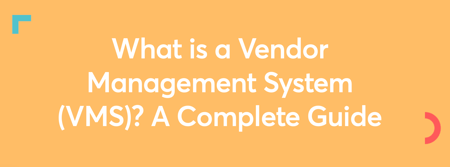
What is a Vendor Management System (VMS)? A Complete Guide
Looking for a VMS? Compare top vendor management systems, explore key features, and learn how automation can streamline your contractor workflows.
Best Contractor Management Software for 2025
Best Contractor Management Software for 2025
Discover the best contractor management software to streamline workflows, ensure compliance, and simplify payments. Manage global contractors with ease.
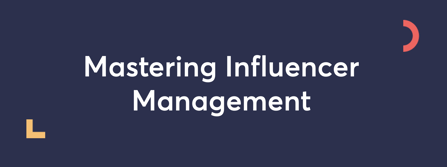
Mastering Influencer Management: Strategies for Effective Collaboration
Our guide to influencer management, exploring strategies, tools, and tips to create successful influencer relationships and enhance your marketing impact.
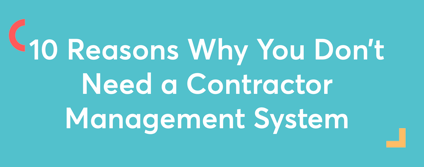
10 Reasons Why You Don’t Need a Contractor Management System
Discover 10 hilarious reasons why you absolutely don’t need a contractor management system - because who needs efficiency, happy freelancers, or sleep?
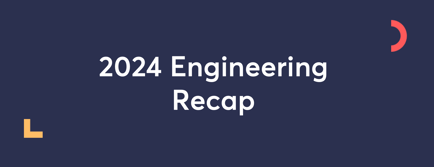
2024 Engineering Recap
See how we enhanced features and added automation in 2024 to improve TalentDesk user experience. Here's a full recap and a look ahead to 2025.
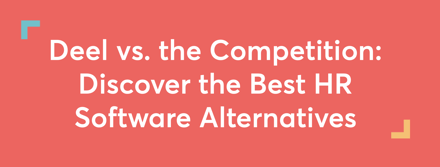
Deel vs. the Competition: Discover the Best HR Software Alternatives
Discover the best Deel alternatives for global HR management. Compare features, pricing, and reviews to find the best solution for your global workforce.
The Ultimate Guide to External Game Development
The Ultimate Guide to External Video Game Development
Explore our ultimate guide on external game development, covering crucial strategies, tools, and tips to manage freelance developers efficiently.
How to Manage Subject Matter Experts
How to Manage Subject Matter Experts
Unlock the full potential of your projects with our expert guide on managing Subject Matter Experts. Learn strategies for effective collaboration.

What is a 1099 employee?
This is a complete guide on 1099 employees. Learn how to classify your workers, improve finances, boost employee morale, and enhance your reputation.
